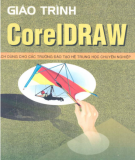Tài liệu Thư viện số
- Khoa học Xã hội (563 )
- Sư phạm (1040 )
- Kỹ thuật công nghiệp (1139 )
- Kỹ thuật Xây dựng (697 )
- Kinh tế - Luật (1320 )
-
Công nghệ thông tin
(958 )
- Nông nghiệp - Thực phẩm (895 )
- Khoa học Tự nhiên (409 )
- Lý luận chính trị (316 )
- Giáo dục thể chất - QP (37 )
Danh mục TaiLieu.VN
- Mẫu Slide Powerpoint
- Luận Văn - Báo Cáo (344720)
- Kinh Doanh Marketing (65512)
- Kinh Tế - Quản Lý (48934)
- Tài Chính - Ngân Hàng (55898)
- Công Nghệ Thông Tin (142209)
- Tiếng Anh - Ngoại Ngữ (47066)
- Kỹ Thuật - Công Nghệ (134345)
- Khoa Học Tự Nhiên (107174)
- Khoa Học Xã Hội (82451)
- Văn Hoá - Nghệ Thuật (54408)
- Y Tế - Sức Khoẻ (173915)
- Nông - Lâm - Ngư (62504)
- Kỹ Năng Mềm (29016)
- Biểu Mẫu - Văn Bản (27610)
- Giải Trí - Thư Giãn (51994)
- Văn Bản Luật (198854)
- Tài Liệu Phổ Thông (402015)
- Trắc Nghiệm Online (213578)
- Trắc Nghiệm MBTI
- Trắc Nghiệm Holland
Tài liệu nổi bật
Kết quả 37-48 trong khoảng 958
-
Lecture Computer graphics - Lecture 31
This chapter explains various storage media and storage devices. Students discover how memory is different from storage. Floppy disks are introduced, and characteristics of a floppy disk, floppy disk drives, care of floppy disks, and high-capacity floppy disks are presented. Hard disks are explained, and students find out about characteristics of a hard disk, how a hard disk works, removable hard disks, hard disk controllers, RAID, and...
51 p tgu 24/02/2024 8 0
-
Lecture Computer graphics - Lecture 21
This chapter explain why computer literacy is vital to success in today's world, describe the five components of a computer, discuss the advantages and disadvantages that users experience when working with computers, discuss the uses of the Internet and World Wide Web,...
13 p tgu 24/02/2024 5 0
-
Lecture Computer graphics - Lecture 25
This chapter described how memory stores data, instructions, and information, and discussed the sequence of operations that occur when a computer executes an instruction. The chapter included a comparison of various microprocessors on the market today.
17 p tgu 24/02/2024 5 0
-
Lecture Computer graphics - Lecture 24
You are introduced to various pointing devices, such as the mouse, trackball, touchpad, pointing stick, joystick, touchscreen, and pen input. Scanners and reading devices, including optical scanners, optical readers, magnetic ink character recognition readers, and data collection devices are explained,...
14 p tgu 24/02/2024 5 0
-
Lecture Computer graphics - Lecture 28
After you read this chapter you should be able to: Discuss the importance of project management, feasibility assessment, documentation, and data and information gathering techniques; discuss the purpose of each system development phase; differentiate between lowlevel languages and procedural languages;...
14 p tgu 24/02/2024 5 0
-
Lecture Computer graphics - Lecture 29
After you read this chapter you should be able to: Describe various types of network attacks, and identify ways to safeguard against these attacks, including firewalls and intrusion detection software; discuss techniques to prevent unauthorized computer access and use; identify safeguards against hardware theft and vandalism;...
16 p tgu 24/02/2024 8 0
-
Lecture Computer graphics - Lecture 30
After you read chapter 8 you should be able to: Discuss the purpose of the components required for successful communications; describe these uses of computer communications: wireless messaging services, wireless Internet access points, cybercafés, global positioning systems, collaboration, groupware, voice mail, and Web services; differentiate among types of networks: LANs, MANs, and WANs;...
20 p tgu 24/02/2024 6 0
-
Lecture Database system concepts (6/e): Chapter 8 - Silberschatz, Korth, Sudarshan
Chapter 8 - Relational database design. This chapter introduces the theory of relational database design. The theory of functional dependencies and normalization is covered, with emphasis on the motivation and intuitive understanding of each normal form. This chapter begins with an overview of relational design and relies on an intuitive understanding of logical implication of functional dependencies.
92 p tgu 24/02/2024 8 0
-
Lecture Database system concepts (6/e): Chapter 2 - Silberschatz, Korth, Sudarshan
Chapter 2 - Intro to relational model. Chapter 2 introduces the relational model of data, covering basic concepts such as the structure of relational databases, database schemas, keys, schema diagrams, relational query languages, and relational operations.
30 p tgu 24/02/2024 7 0
-
Lecture Database system concepts (6/e): Chapter 5 - Silberschatz, Korth, Sudarshan
Chapter 5 - Advanced SQL. In this chapter, we cover some of the more advanced features of SQL. We address the issue of how to access SQL from a general-purpose programming language, which is very important for building applications that use a database to store and retrieve data.
83 p tgu 24/02/2024 6 0
-
Lecture Database system concepts (6/e): Chapter 7 - Silberschatz, Korth, Sudarshan
Chapter 7 - Entity-relationship model. This chapter provides an overview of the database-design process, with major emphasis on database design using the entity-relationship data model. The entity-relationship data model provides a high-level view of the issues in database design, and of the problems that we encounter in capturing the semantics of realistic applications within the constraints of a data model. UML class-diagram notation is also...
102 p tgu 24/02/2024 8 0
-
Lecture Database system concepts (6/e): Chapter 6 - Silberschatz, Korth, Sudarshan
Chapter 6 - Formal relational query languages. In this chapter, we start by presenting the relational algebra, which forms the basis of the widely used SQL query language. We then cover the tuple relational calculus and the domain relational calculus, which are declarative query languages based on mathematical logic.
88 p tgu 24/02/2024 8 0
Đăng nhập
























